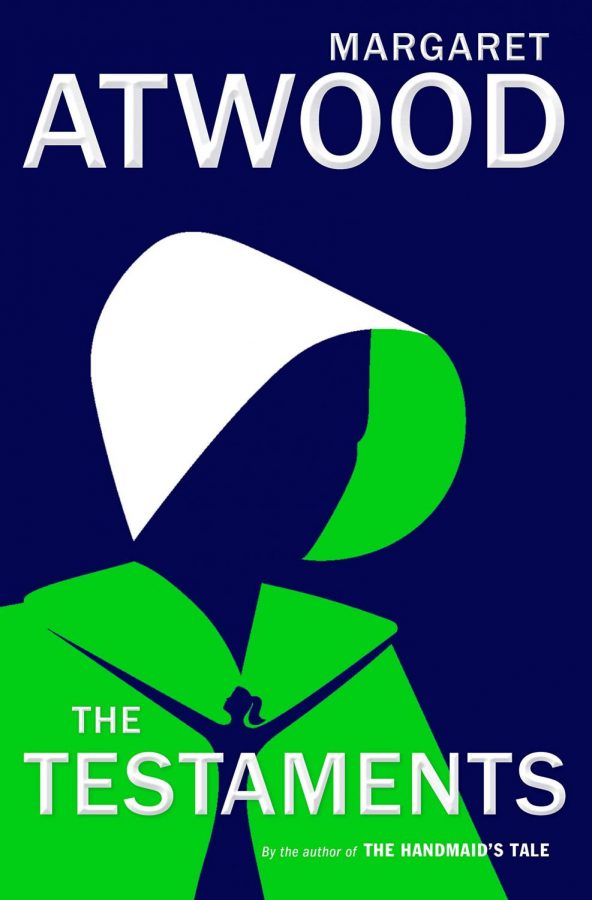Margaret Atwood Regains Center Stage
“Whether this is my end or a new beginning I have no way of knowing: I have given myself over into the hands of strangers, because it can’t be helped. And so I step up, into the darkness within; or else the light,” – The Handmaid’s Tale. In 1985, critically acclaimed author Margaret Atwood ended Offred’s – the main character – story in suspense, leaving dystopian fans enraged. 34 years later, Atwood decided to reveal Offred’s fate in the compelling sequel to The Handmaid’s Tale, The Testaments. Set 15 years after the van door was slammed in the readers’ faces on the last page of the book, The Testaments features three women narrators with a unique outlook on Gilead, the main setting, and its society. As readers explore the voices of Agnes Jemima, Aunt Lydia, and Daisy, questions that had surrounded the ambiguous finale of The Handmaid’s Tale get enigmatic answers. Meanwhile, a critique of humanity’s problems becomes evident. After decades of silence characterized by the muffled voices of the Hulu TV series, Atwood is able to regain center stage.
As the ritualized form of rape titled “The Ceremony” enlightens some of the most mature readers and viewers of the impotence of women in Gilean times, younger audience members are alienated, losing track of The Handmaid’s Tale intricate plot. Dystopian novels paint vivid pictures of alternate societies which are products of humanity’s evident flaws; therefore, they tend to have a specific target audience. For instance, series like The Selection by Kiera Cass attract a younger audience, eager to explore the newly established monarchy of Illea, previously the USA, and the riveting love story behind the royal family. On the other hand, George Orwell’s scandalous 1984 calls for an older reader with a clear understanding of a complex political arena. While both The Handmaid’s Tale book and series are geared towards individuals who are 16 years or older due to scenes like “The Ceremony,” with The Testaments Atwood managed to captivate a broader age spectrum through the use of three women narrators. The first narrator is Aunt Lydia, the only character fans of the first novel will recognize, provides the perspective of an ingenious adult. Her experiences in Gilead allow the reader to comprehend the despiteful motivations behind the formation of this society and the moral doctrines that support it. On the contrary, Agnes Jemima and Daisy provide a youthful and privileged outlook of life in Gilead. While Jemina believes women are “precious flowers,” Daisy calls practices across the Canadian border “weird as fuck,” giving the reader opposing views of what it means to live under an oppressive society, versus a free society. Ultimately, through her clever use of contrasting women narrators, Atwood starts to walk onstage to an audience that is composed of a wider age range than before.
Furthermore, The Testaments is a novel that has managed to capture the solution to transcendental issues of humanity in an engaging manner. In both The Handmaid’s Tale and The Testaments, Atwood paints a cynical society whose orderly structure limits a critical human component: freedom. Despite drawing inspiration from two divergent time periods (the Cold War for The Handmaid’s Tale and the rationale behind mass immigration for The Testaments) both books depict the continuation of world issues throughout the decades. Although a lot of dystopian novels, such as Fahrenheit 451 by Ray Bradbury, might deal with similar topics, the timeliness and everlasting qualities of Atwood’s novels will be perpetually superior to Bradbury’s elementary book-burning known to bore TCS high-school students. When reading from The Testaments, the struggle to create fair immigration laws, anti-abortion policies, and the climate crisis becomes palpable as the three narrators provide unique insight on each of the topics. With her sequel, Atwood puts on an entertaining show that will trigger the emotional fibers of all audience members.
Although a considerable number of fans were reluctant towards The Handmaid’s Tale’s sequel, it was a response to the recreation of books in movies and series. When a producer decides to reproduce a famous novel, the original author and plot are forgotten to allow elements that will increase entertainment value. As soon as the famous Hulu series The Handmaid’s Tale aired, key pieces of the original plot were omitted and with them Atwood’s identity. Soon, she found herself telling TV writers to not kill Aunt Lydia in order to have her appear in The Testaments. The producers had taken ownership of The Handmaid’s Tale, rendering Atwood voiceless. However, stealing a line from Aunt Lydia, she decided it was “better to hurl rocks than to have them hurled at you. Or better for your chances of staying alive.” Responding to popular fan questions about Offred’s fate and even hinting at elements of the Hulu series, Atwood took the final bow, receiving an enthusiastic applause and regaining center stage.
Even though a sequel to a coveted novel is a risk, The Testaments proves that remarkable authors can reclaim their book from strangers in order to continue exploring the most “honest” narrative of their characters. Atwood simply waited “for the footsteps to approach. Between one breath and the next the knock (opportunity to write a sequel) will come” – The Testaments.




